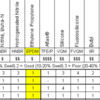I rebuilt my front calipers approximately 18 months ago. Thought I had cleaned and polished pistons, bores and seal grooves sufficiently before reassembly.
Last week the car started pulling under braking and have now found a leaky seal at one of the small pistons.
When I removed the caliper I found hat corrosion in that piston seal groove apparently left impressions (similar to pin holes) in the upper and outer seal surfaces.
I cleaned up the groove with circular Dremel hard and soft disks. I guess dreaming that would work with the groove clean I reinstalled that seal and reassembled but it didn't seal.
Does anyone know the dimension of the seals so that I may search for a single seal rather than purchase a complete kit again. I suppose I could find a dial caliper and measure but thought maybe someone had that information available and the size was available as common seals through hydraulic parts.
I know it's a good possibility and best to again rebuild the fronts and purchase new kits but wanted to avoid that until necessary.
Thanks in advance for any suggestions and help,
Bob
Original Post


